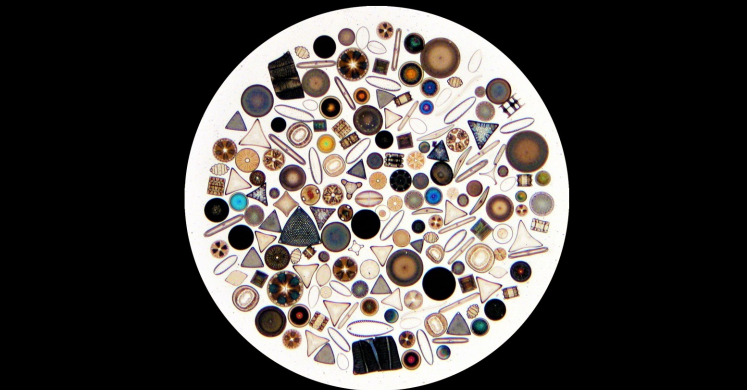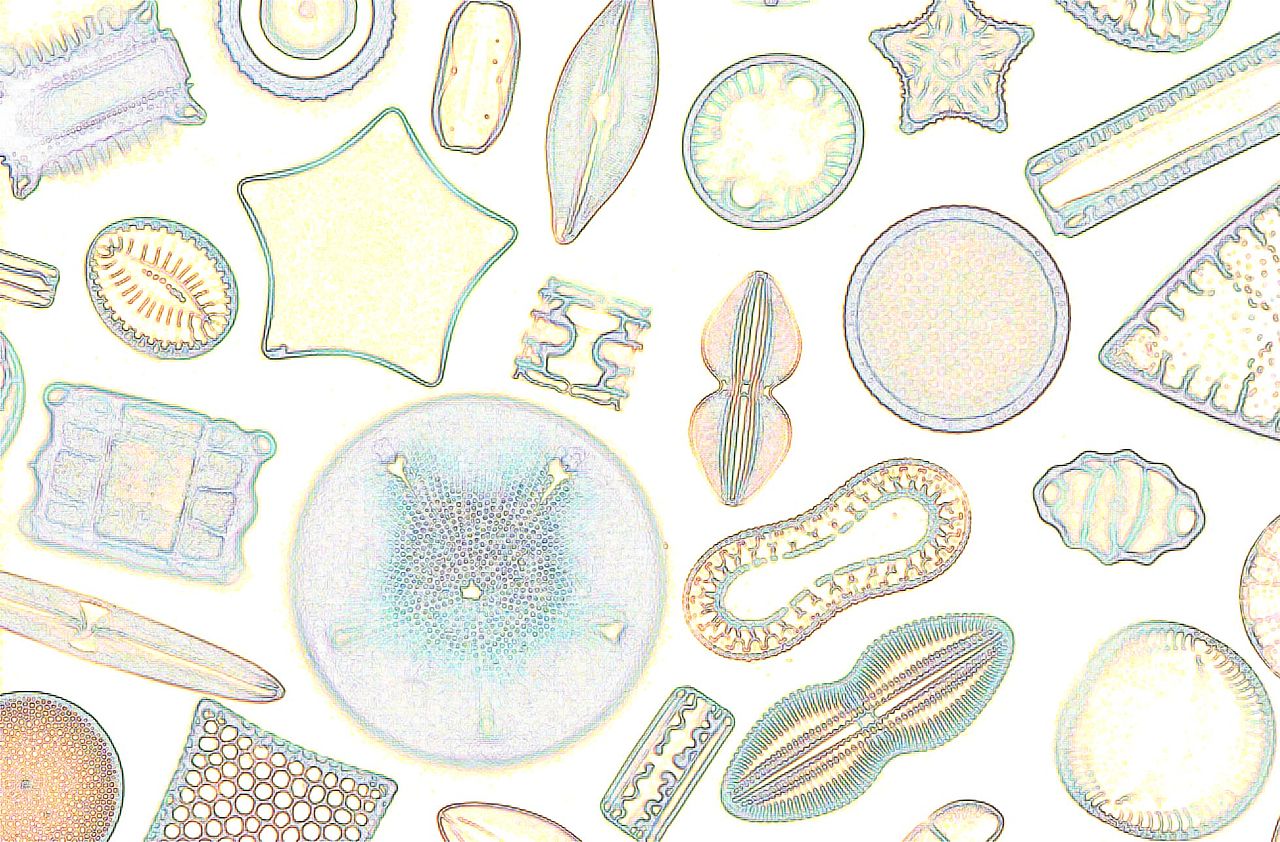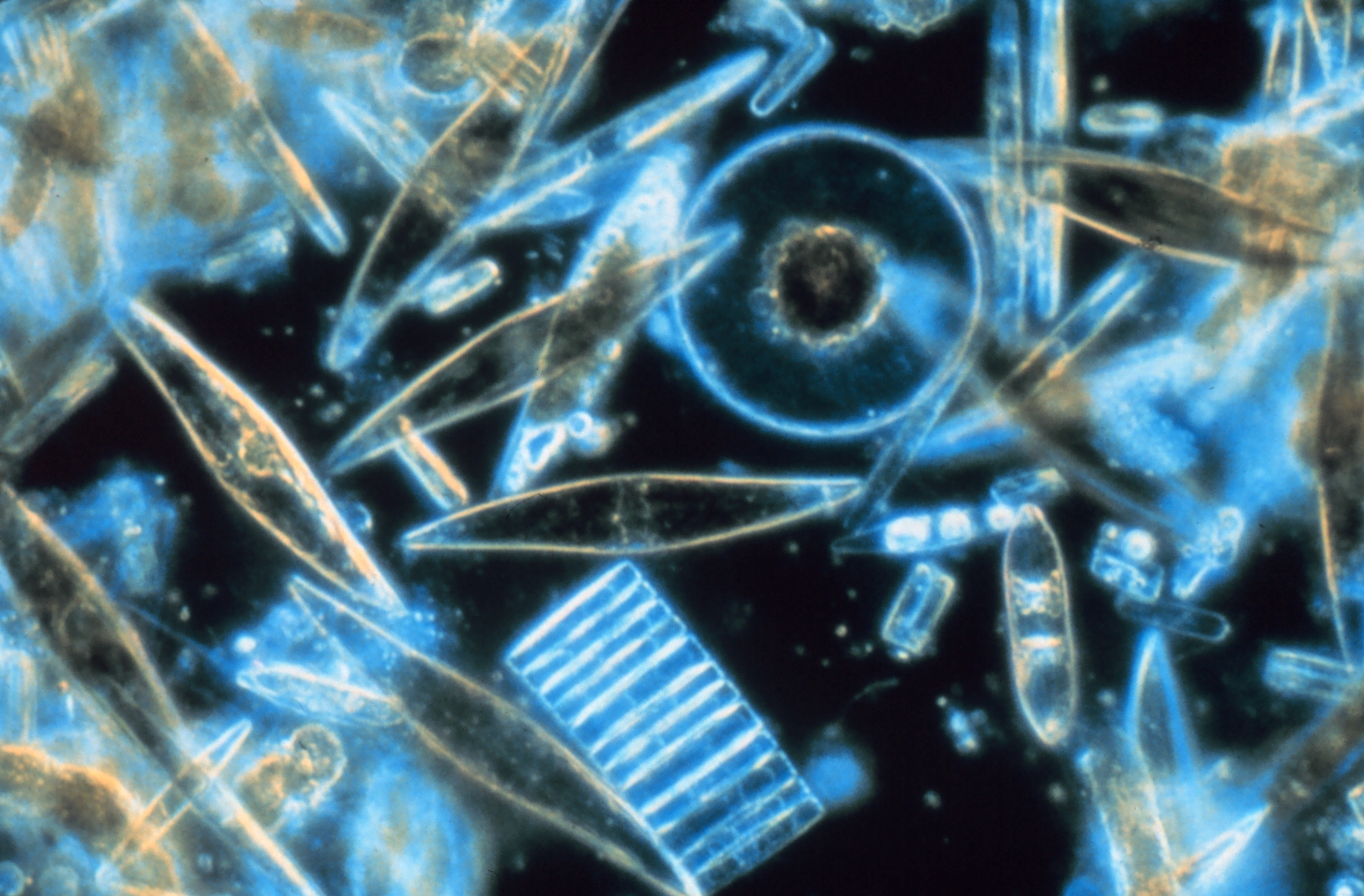Blog

#bioPGH: Delightful Diatoms
 A resource of Biophilia: Pittsburgh, #bioPGH is a weekly blog and social media series that aims to encourage both children and adults to reconnect with nature and enjoy what each of our distinctive seasons has to offer.
A resource of Biophilia: Pittsburgh, #bioPGH is a weekly blog and social media series that aims to encourage both children and adults to reconnect with nature and enjoy what each of our distinctive seasons has to offer.
Do you have a favorite animal and plant? The wild world is so diverse and wonderful, it’s hard to pick just one (gorilla and skunk cabbage — no, orcas and rainbow eucalyptus — no, blue morpho and dragon blood tree…too difficult). Then we can’t forget the less-noticed organisms, the microscopic life, the overwhelmingly bountiful but under-appreciated little beings, like diatoms! Diatoms, a group of single-celled algae, are among my favorite living things because of their kaleidoscope of shapes and colors, plus they produce a significant percentage of the planet’s oxygen. Have you heard of them? Let’s explore!

Photo credit: Wikimedia user Rovag, CC-BY-3.0
Diatoms are microscopic, single-celled type of algae that are encased in a cell wall made of silica — they are practically little living glass boxes. These unique little algae can be found around the world and in a variety of habitat types including oceans, freshwater and in some terrestrial habitats. Diatoms have chloroplasts, which means they can produce their own food via photosynthesis like plants, but they still need to capture nutrients. For the water-based diatoms, this can be tricky since they can’t swim, but they do have a water vacuole — an internal “bag” that can release or hold water. Diatoms can either fill or empty the vacuole to help themselves sink or float. Clever for an organism without a brain!
Importantly, diatoms may be tiny, but they are an anchor of food webs and ecosystems around the world. In the ocean, they are an important food source for organisms slightly larger than themselves (such as protozoans), who are in turn food sources for even larger organisms — ultimately meaning marine food webs and our own food sources such as fish and crustaceans are based on these tiny life forms. Also, as photosynthetic organisms, diatoms produce oxygen and are responsible for at least 20% of our global oxygen production.
In addition to their importance in the natural world, you may have encountered some human uses of diatoms. Diatomaceous earth is a crumbly rock type made of microscopic diatom fossils, and because of the beyond-tiny bits of “glass,” diatomaceous earth has been used in such products as toothpastes and slug repellant. It also can be found in products such as paints, kitty litter, and even metal polishes. In another capacity, researchers can use diatoms to gauge the quality of water in a particular area. The presence or absence of different kind of diatoms can help scientists determine the health of the stream.
Fascinating for a creature that we can’t even see without a microscope, isn’t it? Yet as tiny as they are, we truly do heavily rely on their existence and their ubiquity. Just another sign of our interconnectedness!

NOAA, public domain
Connecting the Outdoors Tip: Diatoms are in most natural water sources, but they are so tiny we don't notice them. If you have a microscope that goes up to at least 100x, you would be able to see them. Many educational scopes can do this!
Continue the Conversation: Share your nature discoveries with our community by posting to Twitter and Instagram with hashtag #bioPGH, and R.S.V.P. to attend our next Biophilia: Pittsburgh meeting.
Resources
UC Berkeley – Diatom Morphology
The Daily Texan – Diatoms can 'swim' to collect food, marine biologists discover
LiveScience – That Air You’re Breathing? A Diatom Made That
Photo credits: cover, Wikimedia Commons user Wipeter, CC-BY-3.0; header, Pexels public domain

